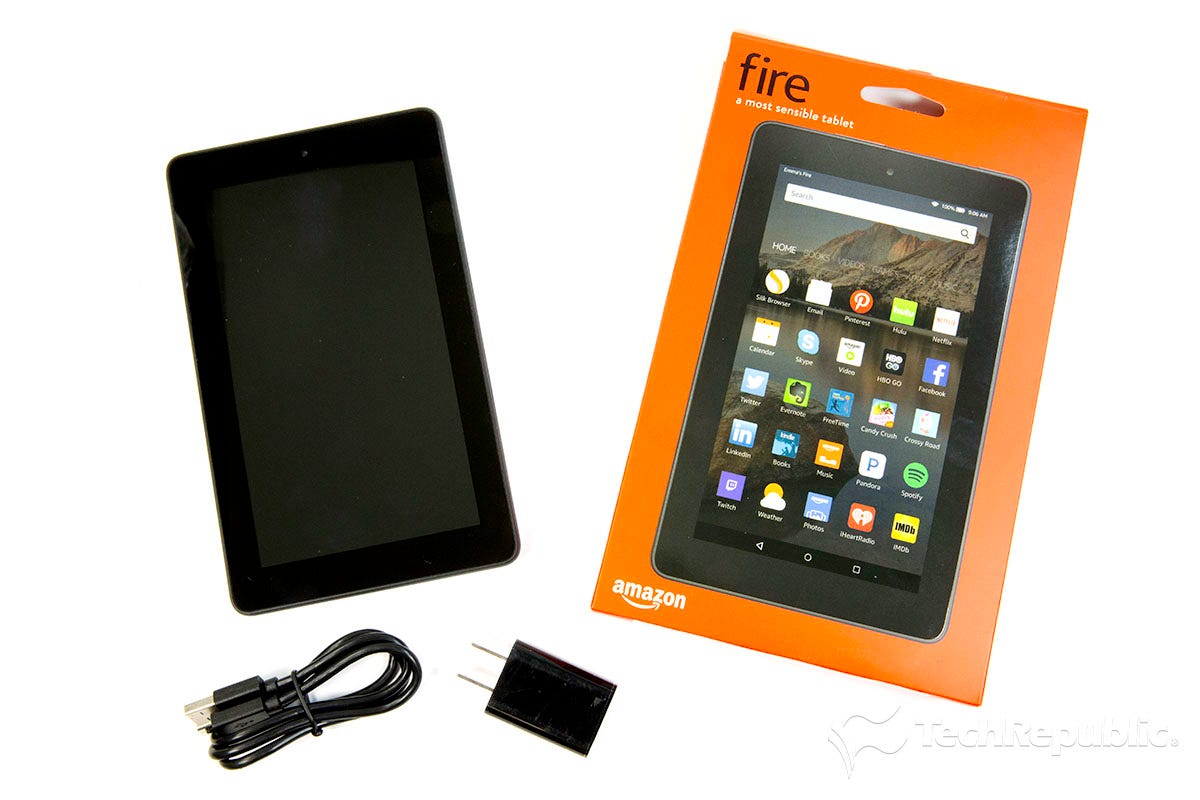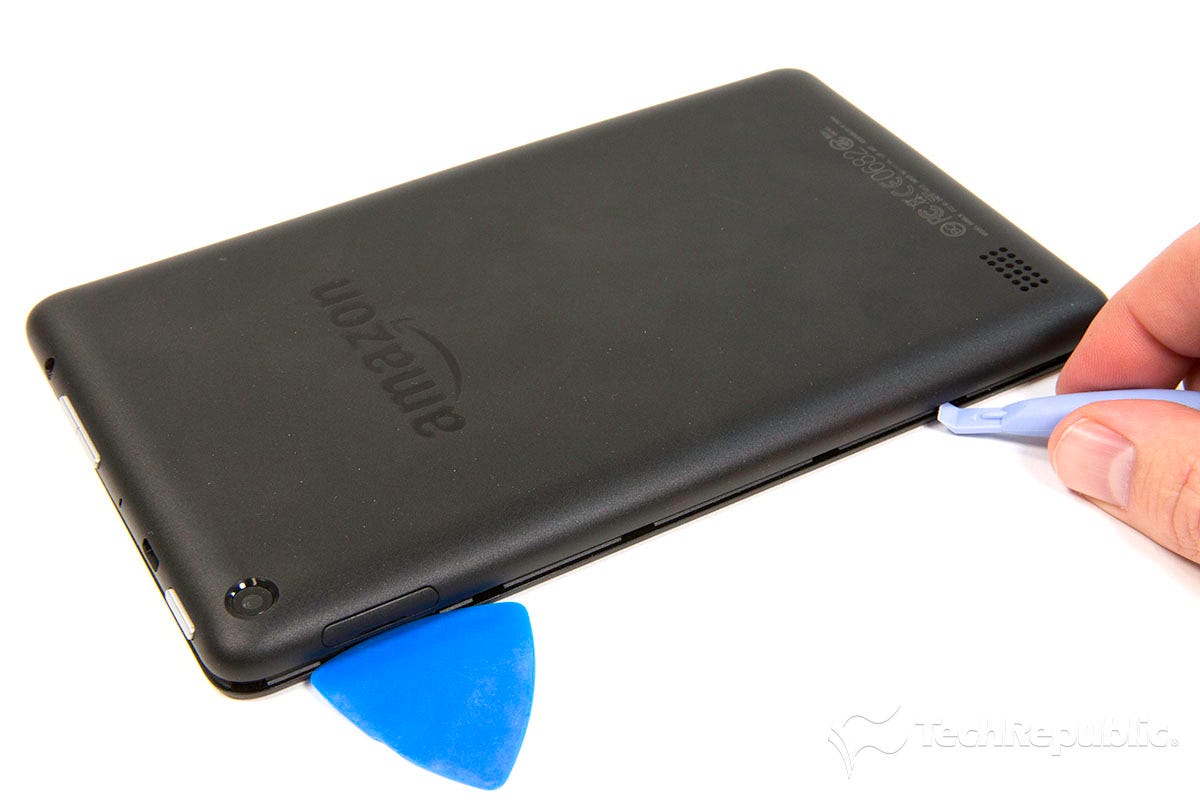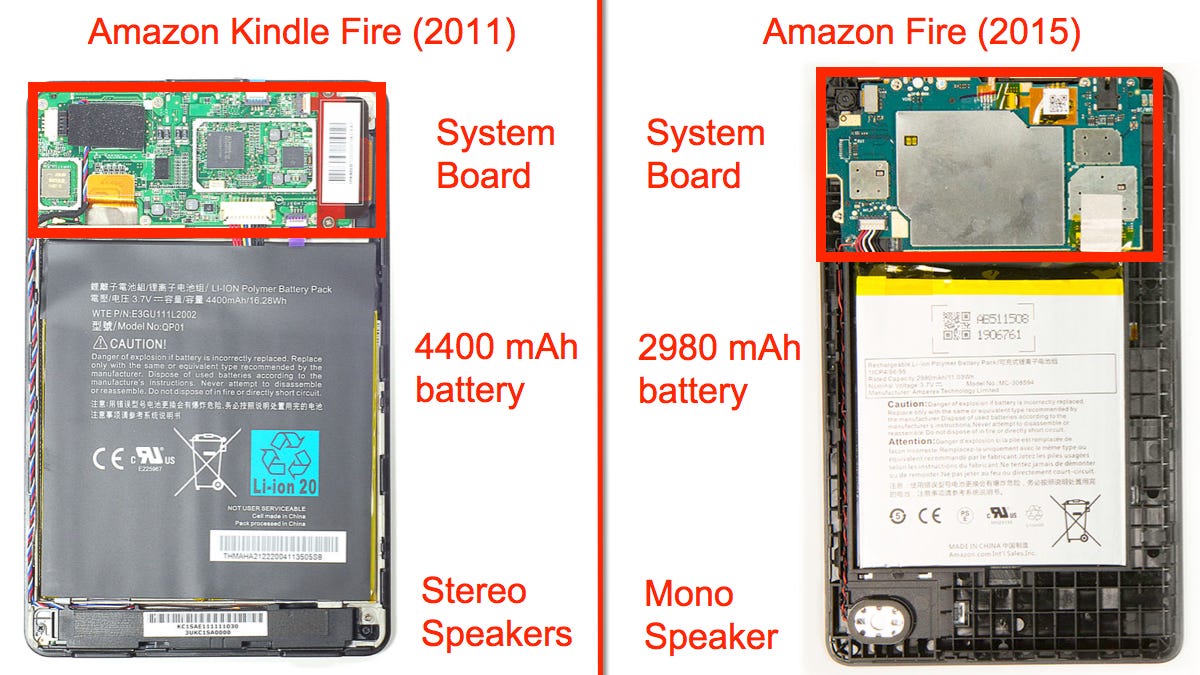

Now playing:
Watch this:
Cracking Open: Amazon Fire 2015
4:28
With its ultra-low price tag, the Amazon Fire tablet is definitely a bargain. But it looks so much like the company’s original Kindle Fire and is so cheap, that I got to thinking. Did Amazon just put old Kindle Fire hardware in a new package? I cracked open the Fire to find out.
Released in 2011, Amazon’s original Kindle Fire was a moderately priced tablet with average specs. It was more of an entertainment device and shopping portal than anything else.
The new Fire tablet takes this concept to the extreme, but does it at a quarter of the cost.
Its dimensions are nearly identical to the original Kindle Fire, but it weighs slightly less and has a more rounded back cover. It also has a lot of features the older tablet didn’t have, such as cameras, a microphone, and a microSD card slot. That microSD slot’s important because, like the original Kindle Fire, this tablet only has 8GB of internal storage and more than 2GB of that is used for the operating system.
Also like the original Kindle Fire, the screen has a 1,024×600-pixel resolution, so it’s not high-definition like the Amazon Fire HD tablets. And the front panel isn’t made with Gorilla Glass, so it’s not as durable as many other tablets on the market.

The 2015 Amazon Fire.
Bill Detwiler/TechRepublic
This, however, is just what we can see from the outside. What I’m really interested in is how the new Fire differs from the first generation Kindle Fire and the second generation model (released in 2012).
Time to crack it open and see.
For more information on the fire, including real-world tests and current pricing information check out the full CNET review.
Getting inside the Fire is a snap
I cracked open the original Kindle Fire back in 2011. And thanks to a back cover that just popped off, that task was relatively simple. Luckily, cracking open the new Fire is just as easy.
Using a guitar pick and plastic tool, I removed the back cover, which gave me access to the internal components.


Removing the Amazon Fire’s back cover.
Bill Detwiler/TechRepublic
Both the new Fire and its older cousin share a similar hardware layout, with the speaker located at the bottom, battery in the middle and system board at the top. But that’s really where the similarities end.
The new Fire’s battery is physically smaller and has less capacity. It also has a single speaker, compared to the early Fire’s stereo setup. The circuit board has been redesigned to allow room for the new cameras, volume buttons, and the microSD card slot.
And, there’s also metal shielding on the the system board instead of the back cover.


Amazon Kindle Fire (left) vs. Amazon Fire (right).
Bill Detwiler/TechRepublic
The first component to come out was the battery, followed by the 2-megapixel rear-facing camera. After disconnecting a few cables and removing several screws, I lifted out the system board and the speaker, which is soldered to it.
Unlike the original Kindle Fire, the new Fire’s front panel and display are a single unit. To remove them, I would need to heat the adhesive that holds them to the plastic frame and pry them loose. As I didn’t want to risk breaking either the LCD or the glass, I decided to leave them in place.
I did, however, remove the large metal shield from the system board. Underneath the shield is a 1.3GHz Mediatek MT8127 ARM Cortex A7 quad-core processor, 8GB Samsung eMMC storage module, and a 1GB Samsung DRAM chip. The Mediatek MT8127 SoC is also used on other budget tablets such as the Lenovo TAB 2 A7-10 and Acer Iconia Tab 10.


Amazon Fire disassembled.
Bill Detwiler/TechRepublic
What the teardown tells us
The new Fire has an upgraded processor, albeit a less powerful one compared to today’s high-end tablets, and basically the same amount of RAM and storage as the 2012 Kindle Fire tablet. No wonder Amazon can sell the thing for $50 bucks. But note that the first-generation Kindle Fire had 512MB of RAM and the second-generation Kindle Fire had 1GB of RAM.
Like its predecessor, the 2015 Fire is a no-frills tablet. It’s designed for browsing the web, playing Amazon content, running Amazon-approved apps and helping you buy merchandise from Amazon. As I said when I cracked open the original Fire, this is really the tablet’s defining characteristic. It basically puts Amazon’s retail store right in your hands. Which is a lot less relevant today, thanks to Amazon’s mobile app.
But if you’re a Prime subscriber who’s looking for an ultra-cheap tablet that you can safely give to the kids (or the host of a CNET show) without worrying about them breaking it, the Fire is definitely worth considering.




